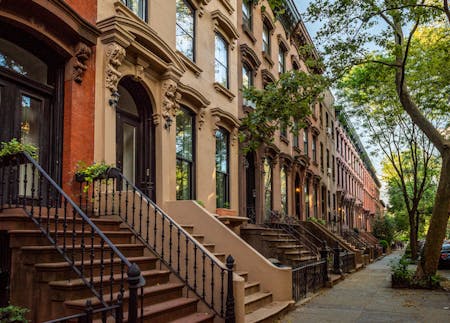Commuting in Austin - Everything You Need to Know
By Sean Creamer on September 12, 2022
Whether you are buying a home in Austin or just hopping into town for a vacation, you should learn how to get around the city.
While most folks drive to their destinations in Austin, you can use a network of light rails and buses to beat the rush hour traffic. However, if you're heading out to Round Rock or Lakeway, you will want to learn more about which highways are best to reach your destination.
Dialing in your commute is easier said than done, which is why we've put together the guide below for commuting in the Austin area.

Public transportation
Austin is a big city occupying over 270 square miles of space, and picking the right way to travel can make or break your commute.
Luckily, once you are in the heart of Austin, there are several ways you can get around the city.
The Capital Metro manages Austin's light rail and bus systems, the MetroRail, and the MetroBus. Two MetroRapid routes run north and south in the city, helping you get around town quickly.
For folks who live outside of Austin, there is the MetroExpress, a series of commuter bus routes that take folks to Austin neighborhoods such as Tarrytown and suburbs like Round Rock. The MetroRail runs from Downtown Austin to the northern Leander suburbs, with nine stations on the line. Riders can grab a local bus at most of these stations.
MetroAccess is ideal for folks with disabilities who need a ride around town. Lastly, if you live close to the University of Texas at Austin, a slew of shuttles run around the campus and nearby neighborhoods.
Ride-share around town
If you have to get to a part of Austin that does not have a bus or MetroRail, locals can rely on Lyft and Uber, which have a large presence in Austin.
Considering the outsize influence technology firms have in Austin, several tech leaders created a local service called Ride|Austin. Users can hail a ride for $1.50 to start, then $.99 per mile, and $.25 per minute to get around Austin neighborhoods and suburbs.
The city also runs a ride-share program called Pickup, where you pay $1.25 to get picked up and dropped off in select areas across Austin.
During events like Austin City Limits. You can also consider local livery companies like Lone Star Cab, Austin Taxi Co., Yellow Cab Austin, and the Austin Cab Company to come to scoop you up.
Consider on-demand scooters
One of the most convenient ways to commute short distances in Austin is on a scooter. Companies like Bird, Lime, Jump by Uber, Spin, and Lyft offer stand-up scooters on-demand. If you prefer a sit-down option, check out Ojo, which offers Vespa-like mopeds with bright red bodies.
There is also a city-run bike-share program called Austin B-Share, where you can grab a bike and head just about anywhere in Downtown Austin.
Riders must follow the same laws as cyclists, so ensure you do not ride on sidewalks, stay in the bike lane where applicable, and yield to all pedestrians.
Get to know your local highways
Commuting in Austin by car can take a little while if you do not know all the highways.
Interstate 35 is the main corridor traveling north and south through Austin, heading north through Round Rock, and continuing onward. The 183 Interstate is west of the 35 and is perfect for avoiding rush hour traffic congestion if you hop on at the right time.
If you're heading east out of Austin, take the 290 interstate, just be aware there are proposals to convert parts of this corridor into a toll road. People living in Lakeway or Bee Cave, use the 71 to reach South Austin. From there folks hop on MoPac Boulevard, otherwise known as the 1 Loop, to get to Tarrytown and Old West Austin.
Folks frequently flying out of Austin-Bergstrom International Airport, should use the 71 or the 183, as both roads intersect near the airport.
Lastly, if you're trying to beat the traffic in Austin, it may be best to hit the 360 Interstate. You can use the Pennybacker Bridge to cross the Colorado River and connect with the 183 to continue heading north towards Cedar Park.











